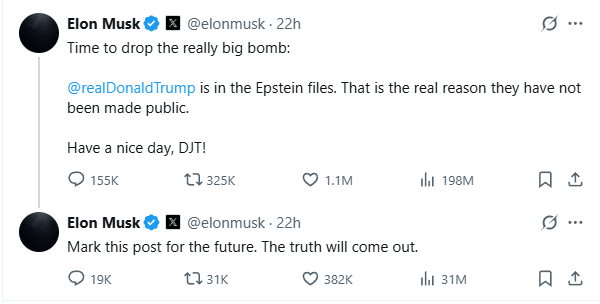In a dramatic turn of events, two of America’s most influential figures, Elon Musk and President Donald Trump, have transitioned from allies to adversaries. Their public feud has captivated the nation, blending political intrigue with personal vendettas. Here’s a breakdown of the unfolding saga.
The Alliance That Was
Initially, Musk and Trump shared a mutual admiration. Musk, the billionaire entrepreneur behind Tesla and SpaceX, was appointed by Trump to lead the Department of Government Efficiency (DOGE), aiming to streamline federal operations. Musk’s substantial financial contributions to Trump’s 2024 campaign further solidified their partnership .
The Breaking Point
The relationship soured when Musk openly criticized Trump’s “Big, Beautiful Bill,” a comprehensive tax and immigration package. Musk labeled the bill a “disgusting abomination,” expressing concerns over its impact on the national debt and the elimination of electric vehicle tax credits .
Escalation of Tensions
Trump responded by threatening to revoke federal contracts and subsidies benefiting Musk’s companies. In retaliation, Musk suggested that Trump owed his 2024 election victory to him, endorsed calls for Trump’s impeachment, and insinuated that Trump’s name appeared in undisclosed Jeffrey Epstein files .

Economic Fallout
The feud had immediate financial repercussions. Tesla’s stock plummeted by 14%, erasing approximately $152 billion in market value and reducing Musk’s net worth by $34 billion in a single day . Investors expressed concerns over Musk’s political entanglements affecting his business ventures.
Political Ramifications
Musk proposed forming a new centrist political party, citing a poll where over 80% of 4.7 million respondents supported the idea . Meanwhile, Trump dismissed Musk as “the man who has lost his mind” and showed no interest in reconciliation .
Conclusion
The Musk-Trump feud underscores the volatile intersection of politics, business, and personal ambition. As both figures wield significant influence, their clash could have lasting implications on the political landscape and the future of American innovation.
Further Reading



